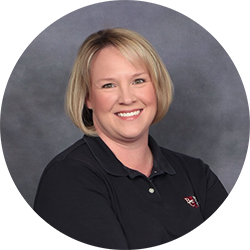New Fannie Mae 1003

You are probably very aware that there is a new Uniform Residential Loan Application Form (URLA aka Fannie Mae Form 1003) available. Believe it or not, this new URLA was announced way back in August 2016! To say the least, it’s been quite a process with a lot of twists and turns and accompanying delays along the way. Unfortunately, and understandably, this has caused a lot of confusion! We thought we’d try to clarify who and/or what actually requires use of this new URLA.
Fannie Mae’s website indicates use of the new URLA was permitted beginning January 1, 2021, with a deadline of March 1, 2021. While this timeframe applies to applications subject to Fannie Mae requirements, there is no regulatory requirement to use this new form by March 1st. In other words, there is no regulatory violation if you don’t switch to the new form by March 1st or if you never switch to the new form at all.
This may come as a surprise to many of you.
You might be thinking, “That’s not what our investor said or what our forms provider told us”. Keep in mind, you still need to satisfy the requirements of other players involved in your loan origination process and you must also do what your system warrants. For example, the Fannie Mae website indicates the new Desktop Underwriter (DU) Interface will only accept the new 1003. Again, use of the new application form isn’t a regulatory requirement but may be required by someone else.
Back in 2016, you may also remember that the CFPB “approved” the form. Why would the CFPB issue an “approval” if the application has nothing to do with compliance? Well, application forms generally have plenty to do with compliance, which is why the GSEs asked the CFPB for “official approval”. While there are a number of compliance requirements that must be met “at application”, whether it be for Regulation B (ECOA), Regulation C (HMDA), or a different regulation, you are free to use any form you want to meet those requirements. For example, under Regulation B, you need to request government monitoring information in certain circumstances and follow the rules for doing so. There are also specific disclosures that go along with collecting GMI as well as other requirements, for example, if you ask whether income is related to alimony, child support, etc., you must disclose that the amounts do not need to be provided if the applicant doesn’t want them used for qualification/creditworthiness purposes.
So, while there are plenty of compliance requirements associated with application requests, there is not a regulation that dictates what form to use. In fact, Regulation B is the only regulation that requires a written application form at all, and it’s only required in the case of applications for the purchase or refinance of an applicant’s primary dwelling (when the loan will be secured by the dwelling).
Appendix B of Regulation B actually gives us model application forms, but clarifies…their use is optional. There is also a version of the URLA form included in Appendix B, but if you look closely, you’ll see it’s the 2004 version. So, if you’re using a URLA today, it’s likely a different version, which is okay. As for updating Regulation B with a more current version of the URLA, the CFPB has essentially stated, maybe it will, maybe it won’t.
The point of this article is not for you to run off and tell your investors that you don’t ever need to use the new form. You’ve likely heard us say, “Their game, their rules”. As we mentioned back in 2016, check with your investors, if you haven’t already heard from them, on transitioning to the new form. On loans you’re looking to sell, you likely do need to transition to the new URLA form, according to the timetable discussed. For those loans you keep in-house; however, don’t stress about having the new application form in place by March 1st. It’s fine if you do and it’s fine if you don’t. In other words, “your game, your rules”. Just ensure the application forms you do use are in line with regulatory requirements.
This article was highlighted in our February edition of the “Banking on BCC” monthly magazine.
Published
2021/02/09

Amy Kudlacek
Amy brings many years of banking and compliance experience to Banker’s Compliance Consulting. She has worked for both large and small financial institutions and spent time working in every area of a bank. She started out as a teller in college and eventually became a branch manager. Her love, however, was always compliance. Amy began her career with Banker’s Compliance Consulting in 2000. Her knowledge and experiences have allowed her to develop a well-rounded and practical approach to regulatory compliance. Amy is CRCM certified, has a Bachelors Degree in Business Administration and is a graduate of the ABA Compliance School. Amy & her husband have two children at home and stay busy following their activities. They spend a lot of time in the bleachers!
